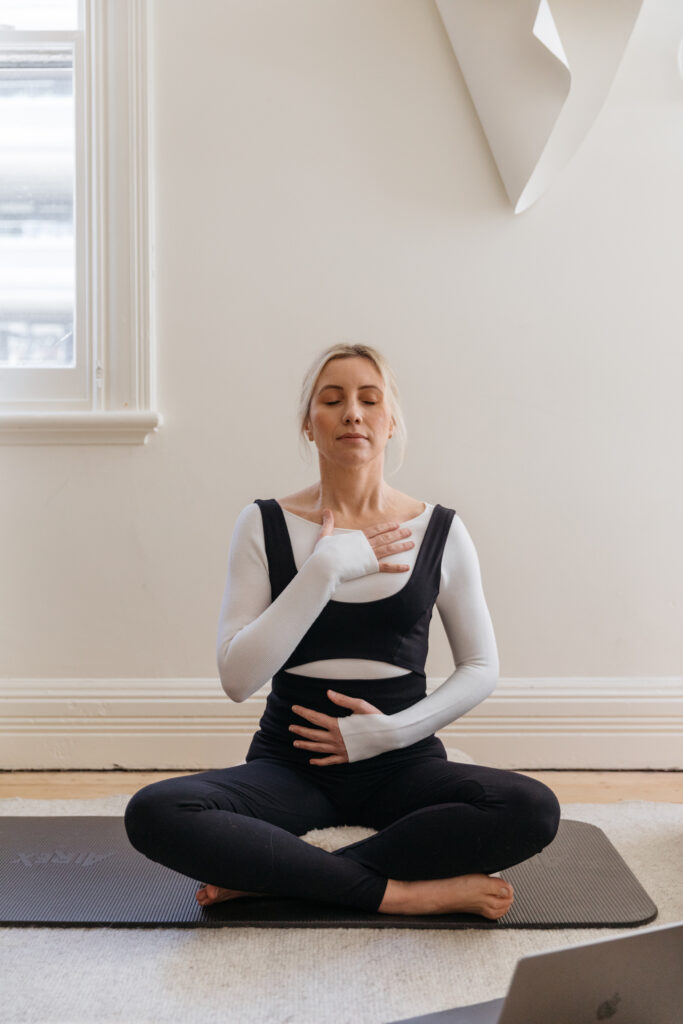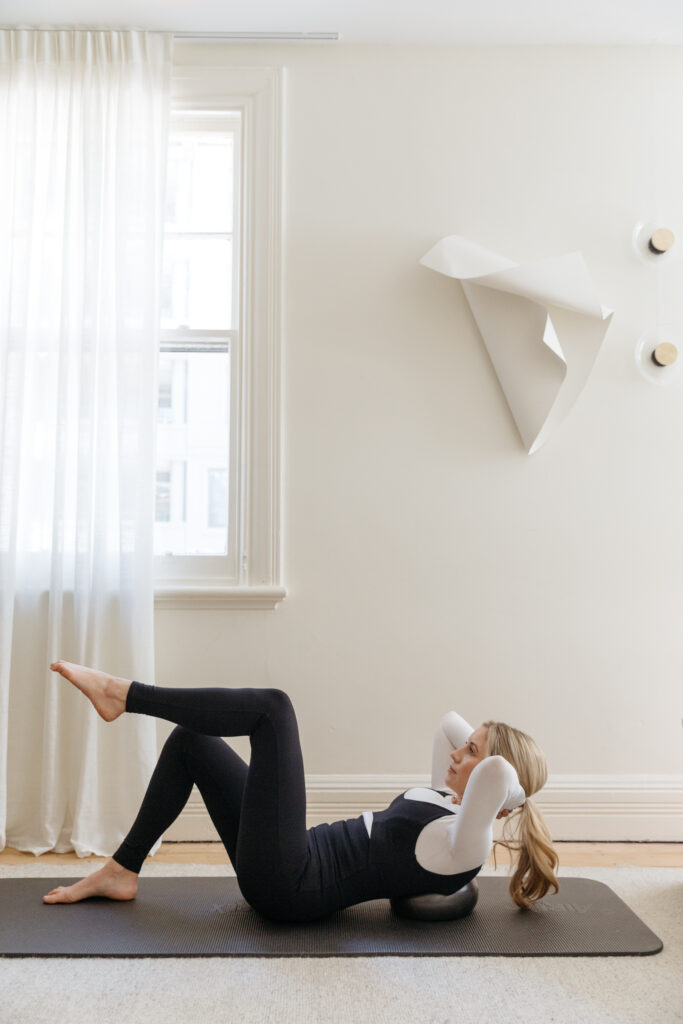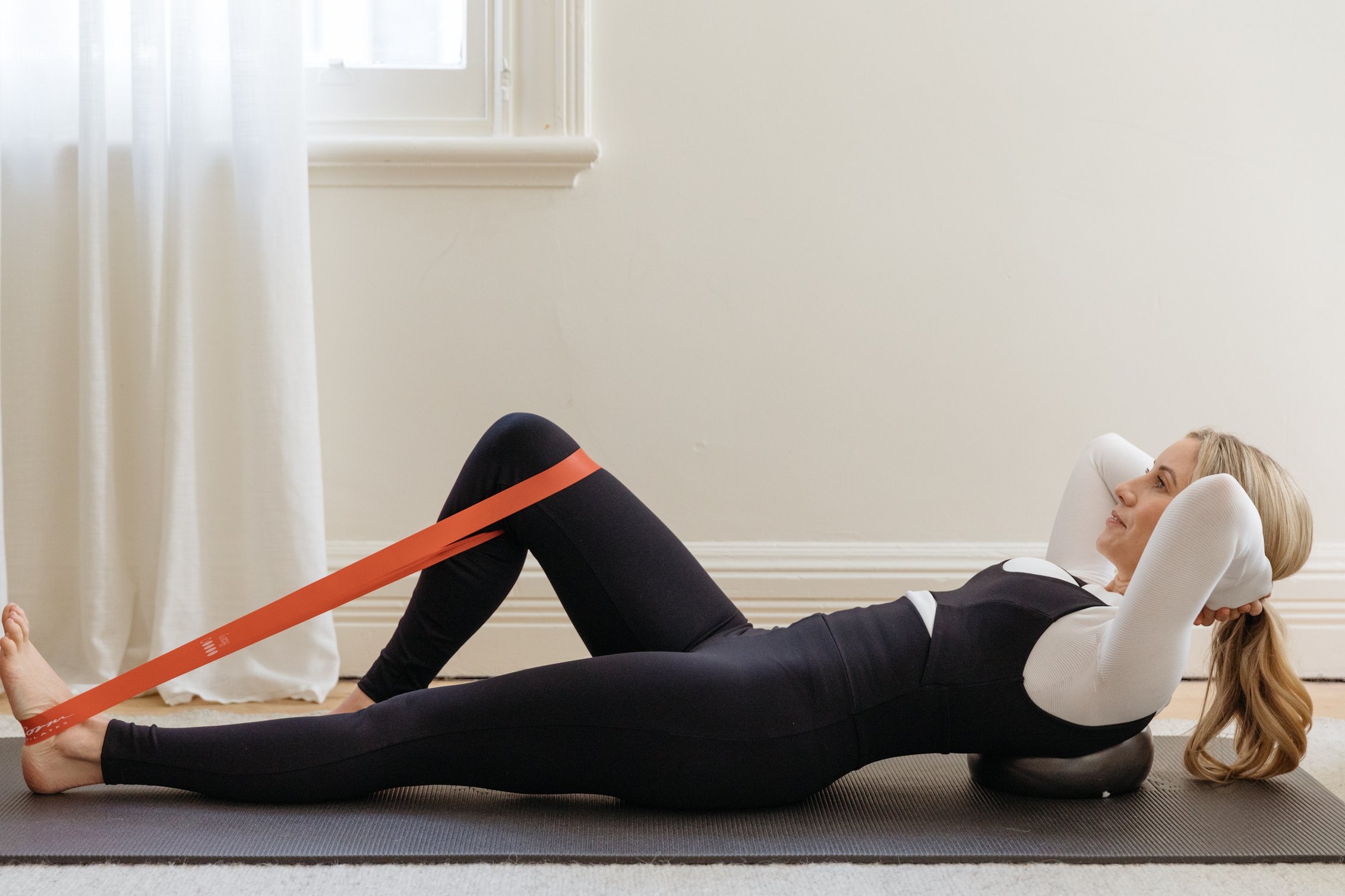Do you struggle to feel that little tremor in your tummy when working your abs?
We often hear people say “I’m not feeling it in my abs” or watch people smash through 100 sit ups and not seeing results.
If this sounds like you – it is time to reassess your form.
Let me take you through the cues and technique to master a chest lift, find that deep abdominal connection feel the little shake in your tummy.

BREATHING
Breathing is one of the most important parts to perfecting your technique and finding that deep abdominal connection.
Here are my tips on breathing, practice this and you will feel the difference:
- Place your hands onto the sides of your rib cage.
- Inhale – Breathe back and up into the rib cage – your rib cage should expand wider.
- Exhale – Draw the rib cage back together and deepen through the abdominals.
This type of breathing means you breathe up and down rather than the tummy going in and out.
See how my rib cage moves when I breathe.
NECK POSITION
The placement of your hands and elbows during a chest lift is super important to reduce any pressure on your neck and ensuring your abdominals are doing the lifting and not your hands / arms.
Your fingers should be interlaced and hands cradling the base of your head with thumbs running down the back your neck and your elbows in your peripheral vision.
Your neck should remain neutral – lengthened at the back, not tipping forward or back.
When you are extending over the ball – the neck remains neutral and the head doesn’t tip back.
Then when lifting, the chin stays lifted with your eye-line towards the ceiling, not tipping the head forward.
The position of your neck doesn’t change throughout, the movement comes from your waist – hello abs!
See my neck stay in a nice lengthened position.

PELVIS POSITION
A neutral pelvis is key to finding that deep abdominal connection.
What is a neutral pelvis?
This position is where your pelvis is flat and open. If you place the heel of your hands on your hips bones and your fingertips on your pubic bone, your hands should be in a flat position, parallel to the floor – not tilting forward or back.
When chest lifting, your pelvis needs to remain in this neutral position to allow for the deep abdominal connection. Keeping this neutral position means you may not be able to lift as high, but remember the key here is not about the height of the lift, but about breathing effectively to engage the abdominals and allowing the abdominals to lift the head and chest.
Your pelvis should remain still throughout – not gripping and tilting to get the height in the lift.
If you struggle to maintain this position when chest lifting, place a small rolled up towel (tea towel or hand towel) underneath your lower back to give you feedback and help you maintain a neutral pelvis.
See my pelvis stay still while I lift and lower my chest.
So remember, it is the combination of effective breathing, holding a neutral neck position and maintaining a neutral pelvis that will help you find your abdominal connection.
Put your knowledge to practice with the Pouch Challenge. This 14-day Challenge will help to engage your deepest abdominal muscles and transform the shape of your core.






